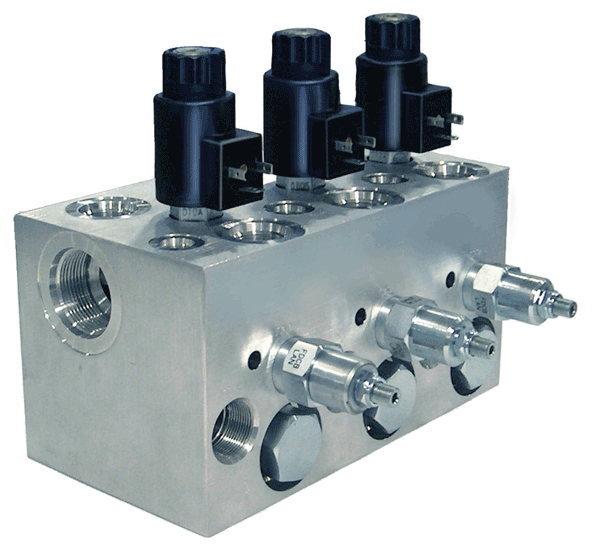







In the specific working process of the hydraulic system, due to the influence of various factors, the hydraulic valve may fail and have a negative impact on the normal use of hydraulic equipment. Therefore, repairing the failure of the hydraulic valve through scientific methods is an important means to ensure the normal operation of hydraulic equipment.
As the supervision and maintenance personnel of hydraulic equipment, they should understand the maintenance methods of hydraulic valves in detail, use them flexibly, effectively deal with hydraulic valve failures, and ensure the good operation of hydraulic equipment.

Clean the hydraulic valves
In the maintenance process of hydraulic valves, the disassembly and cleaning of hydraulic valves is the first process. In the specific use process of hydraulic equipment, hydraulic oil pollution will lead to oil stain precipitation or some particle impurities in the hydraulic oil, resulting in hydraulic valve failure. Generally, these faults can be cleared after disassembly and cleaning, allowing the hydraulic valve to return to its function.
The disassembly and cleaning of hydraulic valves mainly include the following five aspects:
1. Disassembly: For hydraulic valves, although each component is mostly connected by screws, the hydraulic valve is not disassembled in the design. If there is a lack of specialized equipment or expertise, the possible result is damage to the hydraulic valve. Therefore, before disassembly, maintenance personnel should master the structure of the hydraulic valve, and master the connection mode between various parts, and record the position relationship between different parts during the disassembly process.
2. Inspection and cleaning: check the valve body, valve core and other components, observe the deposition of dirt, and use brushes, cotton yarn and non-metallic scrapers to remove concentrated dirt on the basis of not damaging the working surface.
3. Rough washing: Place the valve core and valve body on the cleaning box tray, soak it in heat, pass compressed air into the bottom of the tank, remove the residual stains by the mixing effect generated by the bubbles, and carry out ultrasonic cleaning in the allowable environment.
4. Fine: first use cleaning hydraulic positioning cleaning, and then dry with hot air. Under the premise that the company's conditions allow, you can choose the freshener of the day, and you can also use organic cleaners in some special places, such as gasoline, diesel, etc.
5. Installation: According to the schematic diagram of the hydraulic valve or the installation relationship of the parts recorded in the disassembly process, careful operation should be paid attention to during the installation process to prevent damage to the parts. For some of the original sealing materials, they are easy to be damaged during the actual disassembly process and should be replaced during installation.
Assemble assemblies for repairs
In the process of manufacturing hydraulic valves, in order to effectively improve the assembly accuracy, most of them choose the selection method. That is to say, for a batch of processed parts, such as the valve core and valve body, the matching gap should be reasonably selected according to the actual size, and then installed, so as to ensure that the valve core has good rolling performance and sealing performance.
When there are many failed hydraulic valves in the enterprise, all the hydraulic valves can be disassembled and cleaned, each part is inspected and measured, the parts are classified according to the test results, and then a certain method is used to combine and select again.
Dimensional restoration, repair and overhaul
For the overhaul process, it includes a variety of types, which are more suitable for hydraulic valve overhaul, and the more common application is the brush plating maintenance method, which is also known as electroplating overhaul.
For the electroplating maintenance method, it basically meets the maintenance requirements of symmetrical damage to the hydraulic valve, and further processing is still required after overhaul. In terms of electroplating overhaul, the more common process is chemical composite electroplating, which is developed on the basis of improving the electroplating process, and its advantages are convenient operation method, relatively simple equipment, low cost, and easy control of reaction.